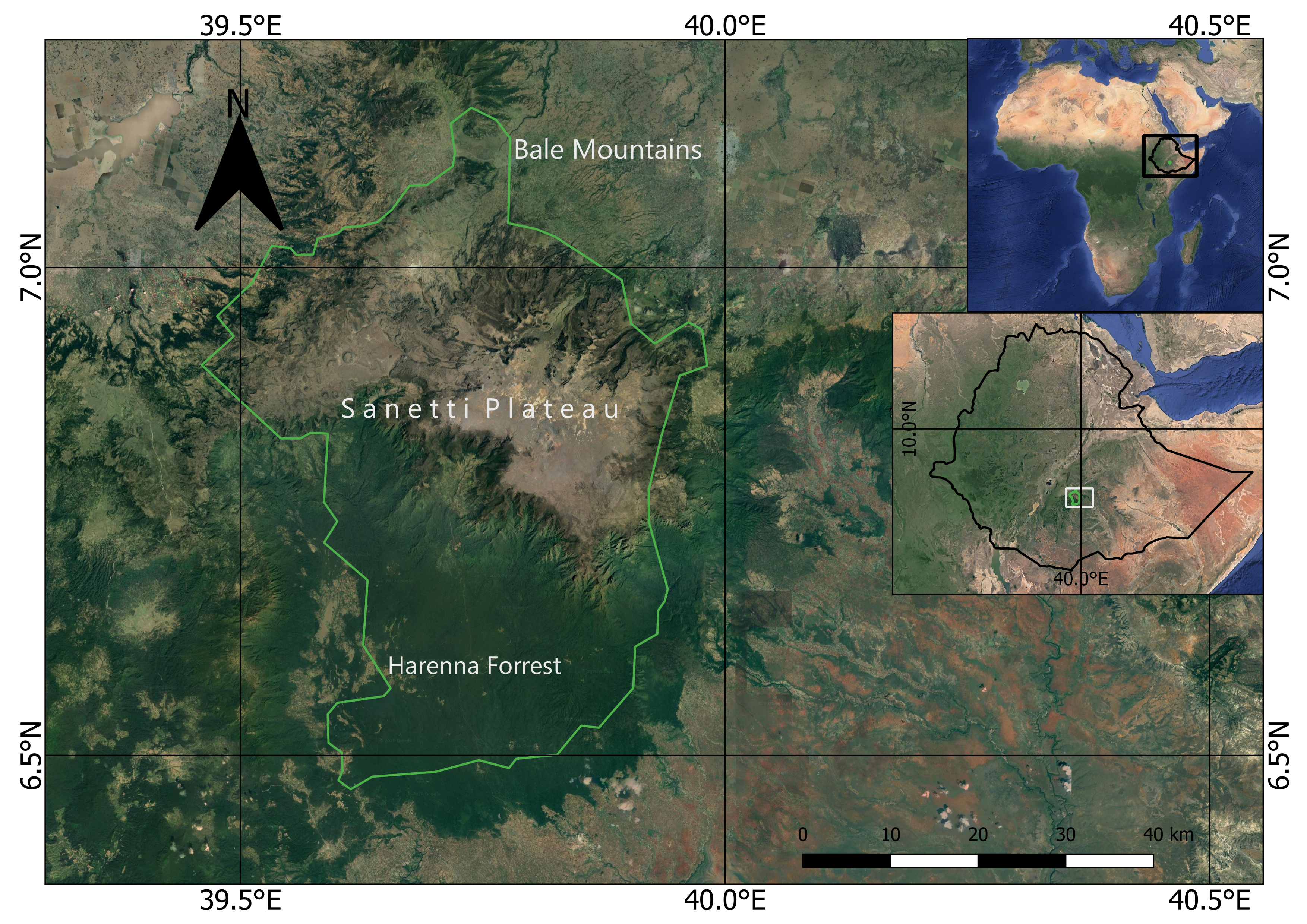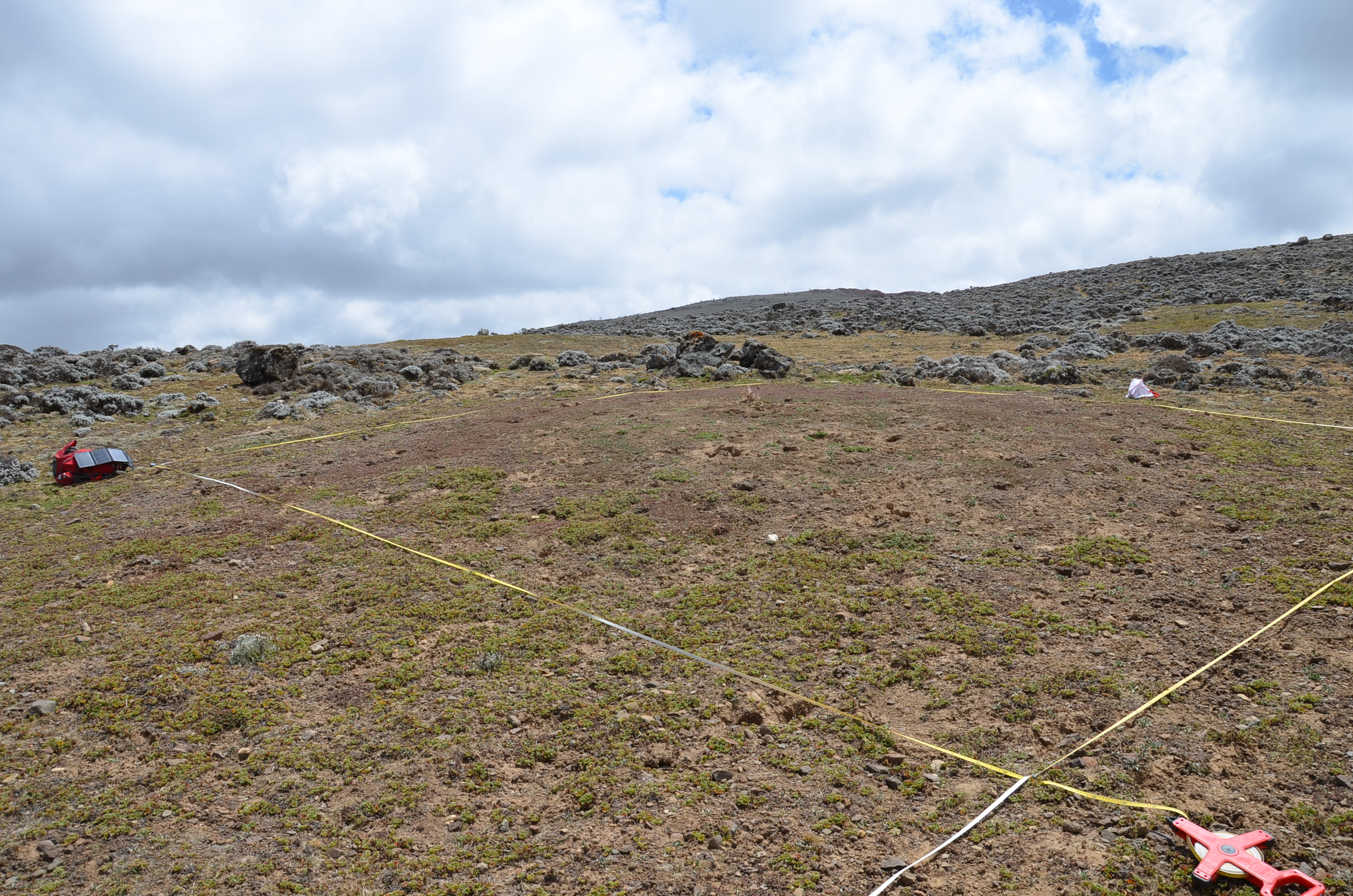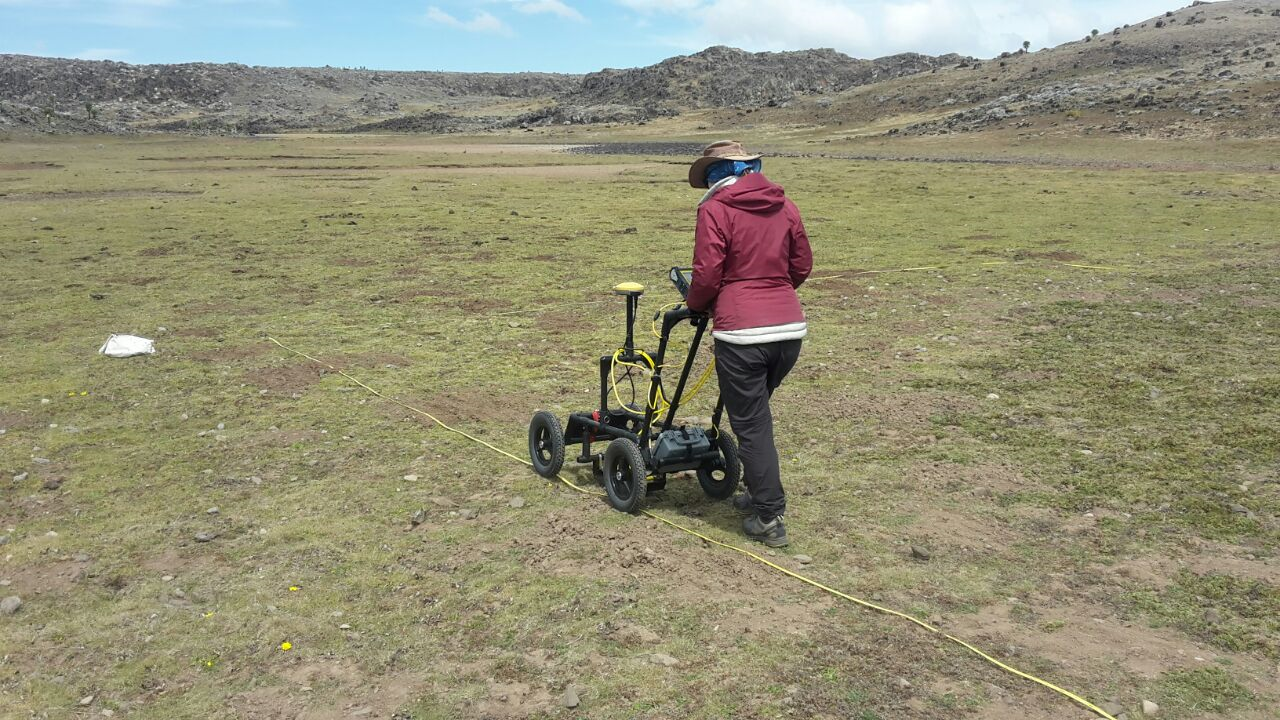Study area - The Bale Mountains
Bale Exile research group, Research Aims, Study design
Bale Mountains National Park, Southern Ethiopia
The Sanetti Plateau and Web Valley of the Bale Mountain National Park in Ethiopia (6º29’ – 7º10’N and 39º28’ – 39º57’E). Ca. 380 km south-east from the capital city Addis Ababa.
The climate of the area is characterized with a wet and warm season (April - September) and a dry and colder season (November – March)
with an annual rainfall of approximately 1000 mm. The massif represents the largest area of afro-alpine vegetation over 3000 m in Africa (Miehe & Miehe, 1994) and is considered as most intact relict of original highland vegetation.

Research Aims
Investigating if there is an correlation between the burrow locations of Giant Molerats (Tachyoryctes macrocephalus) burrow locations, the plateaus surface and impact on the vegetation. We conducted 16 individual survey plots with the dimensions of 10 x10 meters. Those within where separated respectively into two surface-related categories and a control survey set. Distributed in reach for a daytrip from the camp base over the plateau. Accompanied aims are to investigate the moved soil mass inside the burrow system that is put outside and estimate the soil volume on top of each mound. Furthermore, if their locations are recognizable on a larger scale by their activity.


The field work was part of DFG-project RU2358 “The Mountain Exile Hypothesis”. For more information about the project, take a look here.
